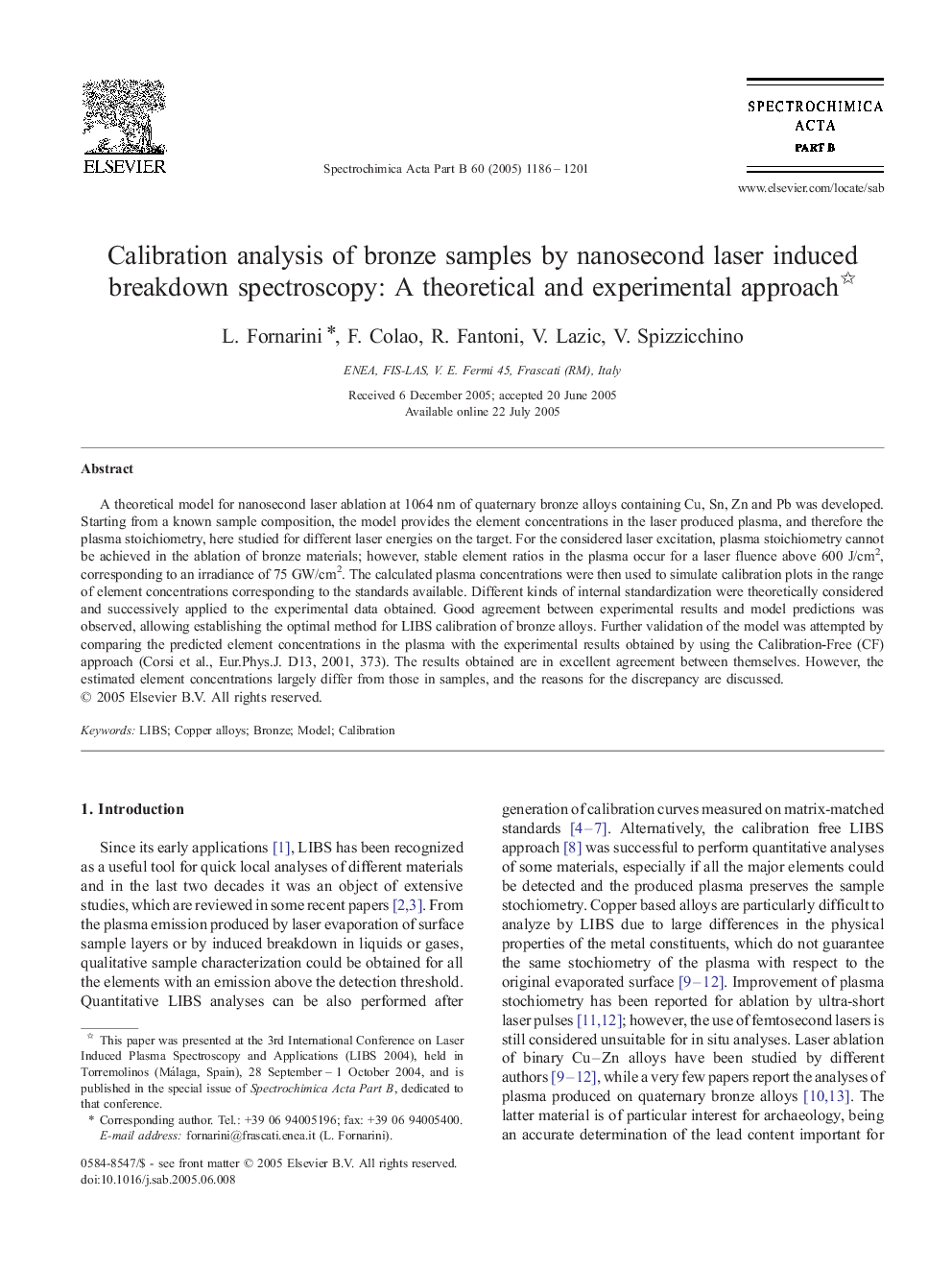| Article ID | Journal | Published Year | Pages | File Type |
|---|---|---|---|---|
| 9757261 | Spectrochimica Acta Part B: Atomic Spectroscopy | 2005 | 16 Pages |
Abstract
A theoretical model for nanosecond laser ablation at 1064 nm of quaternary bronze alloys containing Cu, Sn, Zn and Pb was developed. Starting from a known sample composition, the model provides the element concentrations in the laser produced plasma, and therefore the plasma stoichiometry, here studied for different laser energies on the target. For the considered laser excitation, plasma stoichiometry cannot be achieved in the ablation of bronze materials; however, stable element ratios in the plasma occur for a laser fluence above 600 J/cm2, corresponding to an irradiance of 75 GW/cm2. The calculated plasma concentrations were then used to simulate calibration plots in the range of element concentrations corresponding to the standards available. Different kinds of internal standardization were theoretically considered and successively applied to the experimental data obtained. Good agreement between experimental results and model predictions was observed, allowing establishing the optimal method for LIBS calibration of bronze alloys. Further validation of the model was attempted by comparing the predicted element concentrations in the plasma with the experimental results obtained by using the Calibration-Free (CF) approach (Corsi et al., Eur.Phys.J. D13, 2001, 373). The results obtained are in excellent agreement between themselves. However, the estimated element concentrations largely differ from those in samples, and the reasons for the discrepancy are discussed.
Related Topics
Physical Sciences and Engineering
Chemistry
Analytical Chemistry
Authors
L. Fornarini, F. Colao, R. Fantoni, V. Lazic, V. Spizzicchino,
